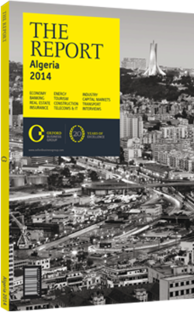New legislation on mining is designed to encourage foreign partners
Hydrocarbons have long served as the backbone of Algeria’s economy, but in the past year there has been a push to encourage activity in other extractive industries, following the introduction of new legislation aimed at increasing mineral production. The text of the new mining bill, which was approved by the National Assembly and the upper house in late January 2014, is seen as crucial to helping stimulate new exploration and production in the sector, with reforms improving both procedural transparency and fiscal incentives. According to Minister of Energy and Mines Youcef Yousfi, the law aims to entice investors by “confirming the interest of Algeria in the mining sector”, while also highlighting the importance of sustained job creation and prudent environmental management.
All Change
The legislation paves the way for the government to take a lead role in helping the sector reach its full potential, with a two-fold focus on exploration and research. In a key move, the law expands the duties of the Office of Geological and Mining Research, boosting both its manpower and physical resources. Other state entities are also set for bigger roles. Following a restructuring, the newly created Geological Survey Agency, formerly the National Mining Agency, will be charged with managing geological and mining infrastructure. Another reconfigured entity, the National Agency for Mining Activities, formerly the National Agency of Geology and Mining Control, will be tasked with managing mining assets and overseeing the sector’s activities. Both agencies are expected to be have an active role in developing mining policy.
The law makes available several incentives aimed at encouraging private companies to invest in the sector. Currently, there are over 400 small-scale mining operators active in Algeria, according to the Ministry of Energy and Mining, accounting for more than three-quarters of the active sites. Goods used for prospecting, mineral exploration and creating mining-based infrastructure, as well as services related to the industry, have been given an exemption from value-added tax. The legislation also marks the end of duties, taxes and Customs charges on imported goods to be used directly in mining activities.
Thinking Strategically
The law sets out two different categories of mineral resources – general and strategic – with different rules for each. For the former, any Algerian company can undertake mineral exploration and exploitation provided it has sufficient technical and financial resources, whereas strategic resources can be exploited only by the government and public institutions. Included in the strategic resource category are radioactive materials, metallic and nonmetallic minerals used for industrial purposes, precious metals, and precious and semi-precious stones, together with large mineral deposits that have exceptionally low operating costs due to ideal geological conditions. However, provisions are made for public enterprises to bring foreign partners on board for projects, provided the state retains a 51% stake – similar to the country’s regulations on hydrocarbons.
Untapped Potential
The government will be hoping that its efforts to spur the industry through new exploration will lead to new jobs, especially in remote areas of the country, where an economic boost would be welcomed. According to the ministry, the sector employed some 30,000 people as of 2009. Algeria’s mineral-rich areas span both the north and the south of the country, with more than 1100 sites spread across all 48 wilayas (provinces). The breakdown of mining output in 2009, the latest year for which these data were available, included 1.3m tonnes of iron, 1m tonnes of phosphate, 20m tonnes of limestone, 10.4m tonnes of clay and 1.8m tonnes of gypsum. Total production at Algeria’s mines and quarries has declined in recent years, falling by 3.3% in 2010, 9.5% in 2011 and 5.6% in 2012. However, the first six months of 2013 brought signs of a recovery, with the National Office of Statistics reporting an increase in output of 2.7% year-onyear. The reversal was led by growth in the stone, sand and clay segment, which rose by 5.2% in that period.
You have reached the limit of premium articles you can view for free.
Choose from the options below to purchase print or digital editions of our Reports. You can also purchase a website subscription giving you unlimited access to all of our Reports online for 12 months.
If you have already purchased this Report or have a website subscription, please login to continue.

